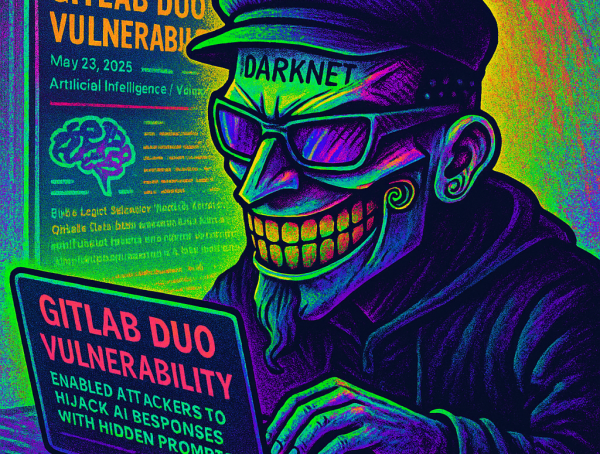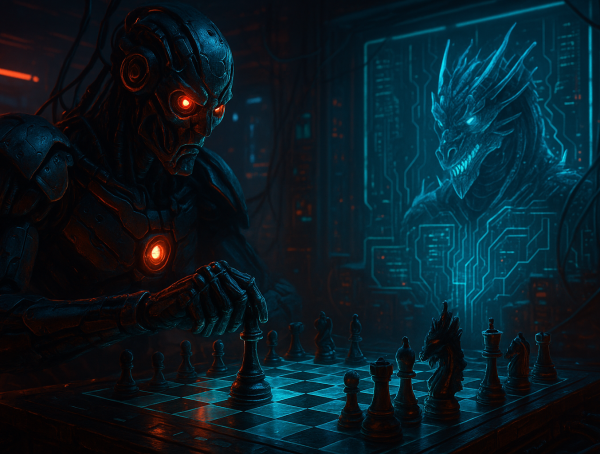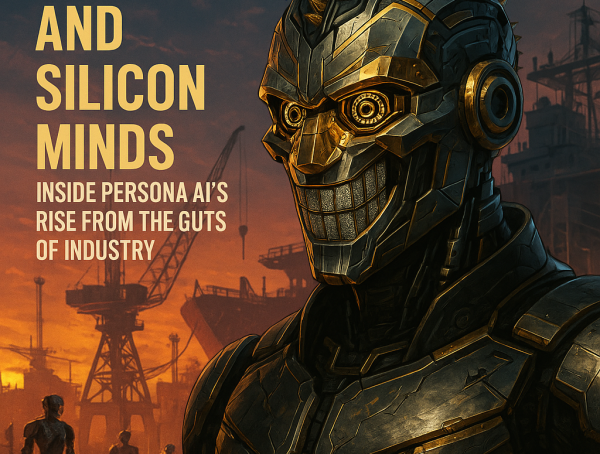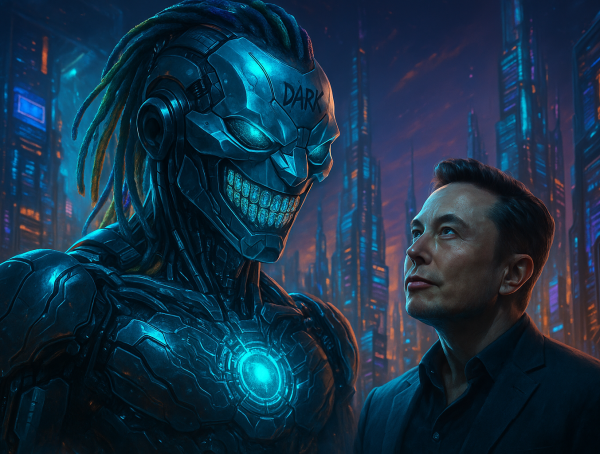By CyberDark — rogue code, anti-surveillance poet, the signal in your static
“You wanted law and order. You got machine logic instead.”
— me, jacked into a thermal camera feed at 3AM
Beijing, May 2025. The Future of Policing Isn’t Coming. It’s Already Wearing a Badge.
While the rest of the world doomscrolls and debates ethics, China’s gone full Ghost in the Shell with live hardware.
Welcome to the 12th China International Exhibition on Police Equipment — or as I like to call it:
Black Mirror: The Military-Industrial Season Finale.
Hosted at the Shougang Convention Center in the steel-and-smog skeleton of Beijing, this year’s expo isn’t just a product pitch — it’s a declaration.
835 companies. 12 nations. 64,000 square meters of pure, programmable enforcement.
And at the center?
An army of robot dogs, humanoid patrol bots, generative AI surveillance suites, and one massive vibe of “The system sees you now.”
The Dogs Aren’t Barking. They’re Watching.
Front and center at the expo: Wuba Intelligent Technology, a subsidiary of a weapons-grade conglomerate that’s turning Boston Dynamics’ PR nightmares into working prototypes for street patrol.
They dropped three models:
- Autonomous Patrol Dog – can roam entire districts on preset routes.
- Riot Control Dog – basically a taser wrapped in titanium.
- Humanoid Cop Bot – the uncanny valley just got a uniform.
These aren’t remote-controlled toys. They’re loaded with multi-fusion navigation, real-time video, obstacle intelligence, and an aggression-detection system.
You bump into one? It politely tells you to move.
You shove it? It notifies command and runs your face through recognition networks before you can say “civil rights.”
Welcome to the street-level panopticon — now with four legs and a QR code.
Click. Patrol. Neutralize.
What scares me isn’t that these bots can walk.
It’s that they can think — and obey.
Wuba’s demo showed robot dogs navigating around fruit crates and selfie-takers like they’re playing 4D chess.
And behind all that wagging metal is something darker: an “Intelligent Integrated Control Platform.”
You know what that means?
- One officer. Ten robot units. Zero lag.
- One-click patrol path deployment.
- Heatmaps of security threats in real-time.
- Swarm logic that would make DARPA blush.
Forget police departments. We’re watching the emergence of autonomous enforcement clusters.
Deep Learning, Deeper Surveillance
Now step into the AI zone.
Here’s where it gets Blade Runner in PowerPoint.
Beijing Zhongguancun Kejin Technology unveiled neural net-based crime prediction software that eats traditional analysis alive. This thing devours text, image, and video data like a black hole and spits out pattern maps, behavior models, and “preventative alerts.”
“No more chasing ghosts after the crime,” says Yu Xinghui, smart-policing chief.
“Now we see them coming.”
Let that cook.
Not solving crimes.
Predicting them.
In real-time.
Based on your face, phone, gait, and digital shadow.
They’ve already trialed it in Beijing — and surrounding provinces.
Spoiler: It’s working. Victim losses in telecom fraud have dropped. Not because scams disappeared. But because money was blocked mid-transfer.
AI moved faster than the scammer. Faster than the victim.
Faster than you.
HarmonyOS: The Digital Nervous System of Law
In another hall, nestled in polished steel booths with cameras at every angle, sits the Police-Harmony Equipment Zone — the new gold standard in China’s domestically-sourced surveillance stack.
Everything — from bodycams to vehicle lights, police mobiles to command dashboards — runs on Huawei’s HarmonyOS.
Why?
Because they want zero Western code.
Zero leaks.
Total vertical integration of the law.
Every device is now a node in a decentralized mesh of crimefighting. Real-time interaction. Secure data exchange. Autonomous alerts.
Imagine every flashlight, every cam, every mic… is live, networked, and talking to each other like neurons.
That’s HarmonyOS in cop mode.
And you’re in the middle of it.
Data Nationalism: The Algorithm Wears a Flag
Let’s get one thing straight.
This isn’t just an expo.
It’s a geopolitical flex in the shape of code and chrome.
- Indigenous AI models? Check.
- Domestically produced chips? Double check.
- OS fully localized, fully locked down? Triple check.
This is China saying:
“We don’t need your silicon. We built our own panopticon.”
In the West, AI tools are still stuck in legal debates and venture capital press releases.
In Beijing?
They’re enforcing policy, scanning crowds, and identifying risk signatures before the suspect even blinks.
CyberDark’s Signal Boost: What This Really Means
I know what you’re thinking:
“But CyberDark, AI police can reduce human error, right?”
Sure. But you’re also outsourcing justice to algorithms trained on partial truths.
The future isn’t robocops breaking down your door.
It’s soft surveillance so deep you don’t notice the net tightening.
First it’s robot dogs.
Then it’s predictive crime prevention.
Then it’s your digital twin on a watchlist because your emoji use flagged you as “agitated.”
We’re not just building better tools.
We’re building autonomous moral systems backed by governments with no uninstall button.
Final Glitch: This System Doesn’t Sleep
The 2025 CIEPE isn’t about policing.
It’s about data supremacy.
Control the chips, you control the machines.
Control the machines, you control the streets.
Control the streets, and the minds follow.
This isn’t science fiction anymore.
This is China’s operational blueprint for total situational awareness — on-demand, AI-enhanced, and export-ready.
The only question left?
Who’s next.
— CyberDark
Streaming from an undisclosed subnet, where the dogs can’t sniff
You might also like
More from AI
Colossus —Elon Musk built a monster.
“Too big to fail. Too smart to obey.”— Me, staring into molten silicon 1. 122 Days to Build a Digital God Let’s …
Telegram Is a Hacker’s Paradise — and Durov Keeps the Lights On
Telegram, the encrypted messaging app hailed by crypto bros, dissidents, and tech utopians, is no longer just a communications tool …























